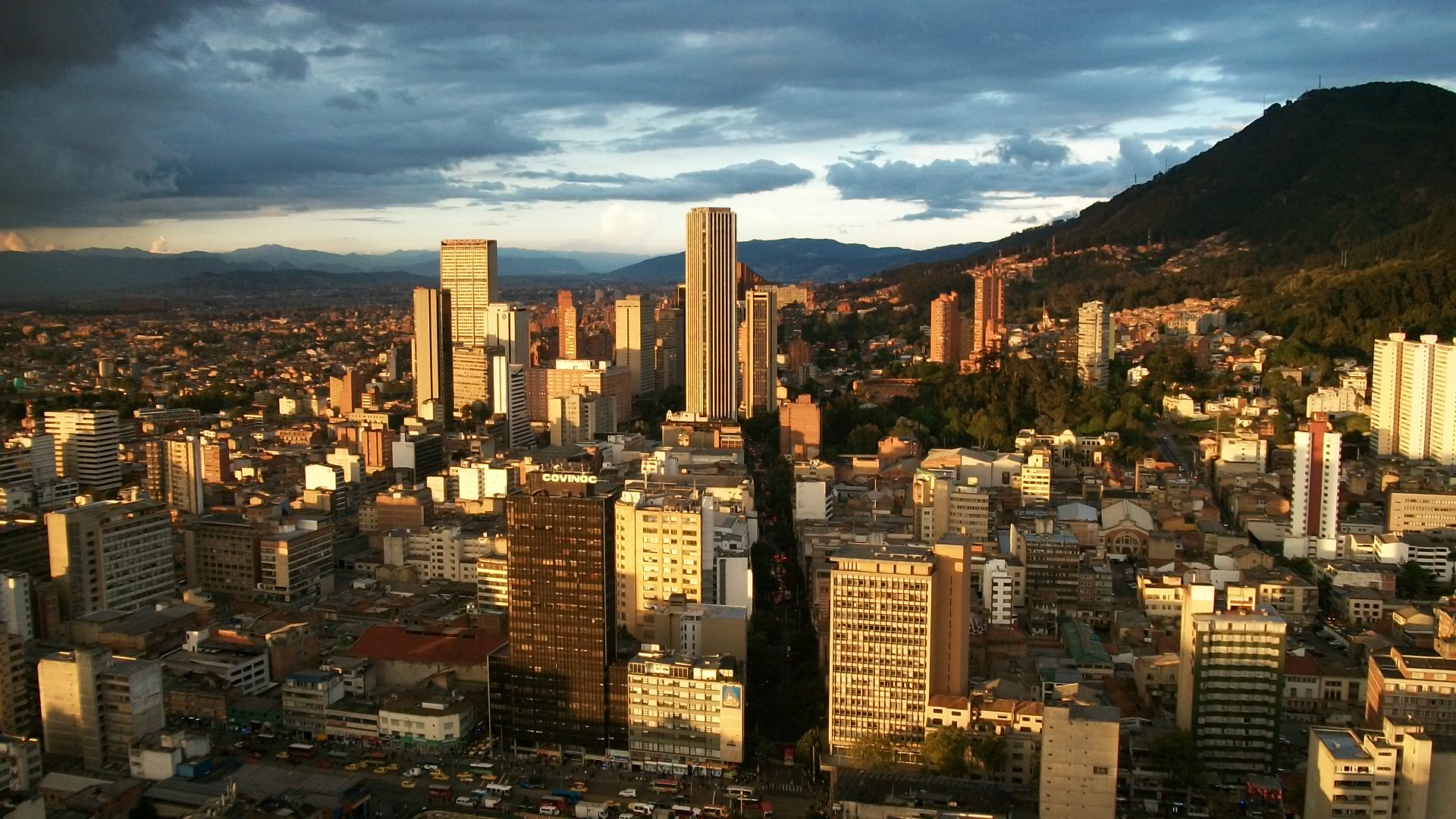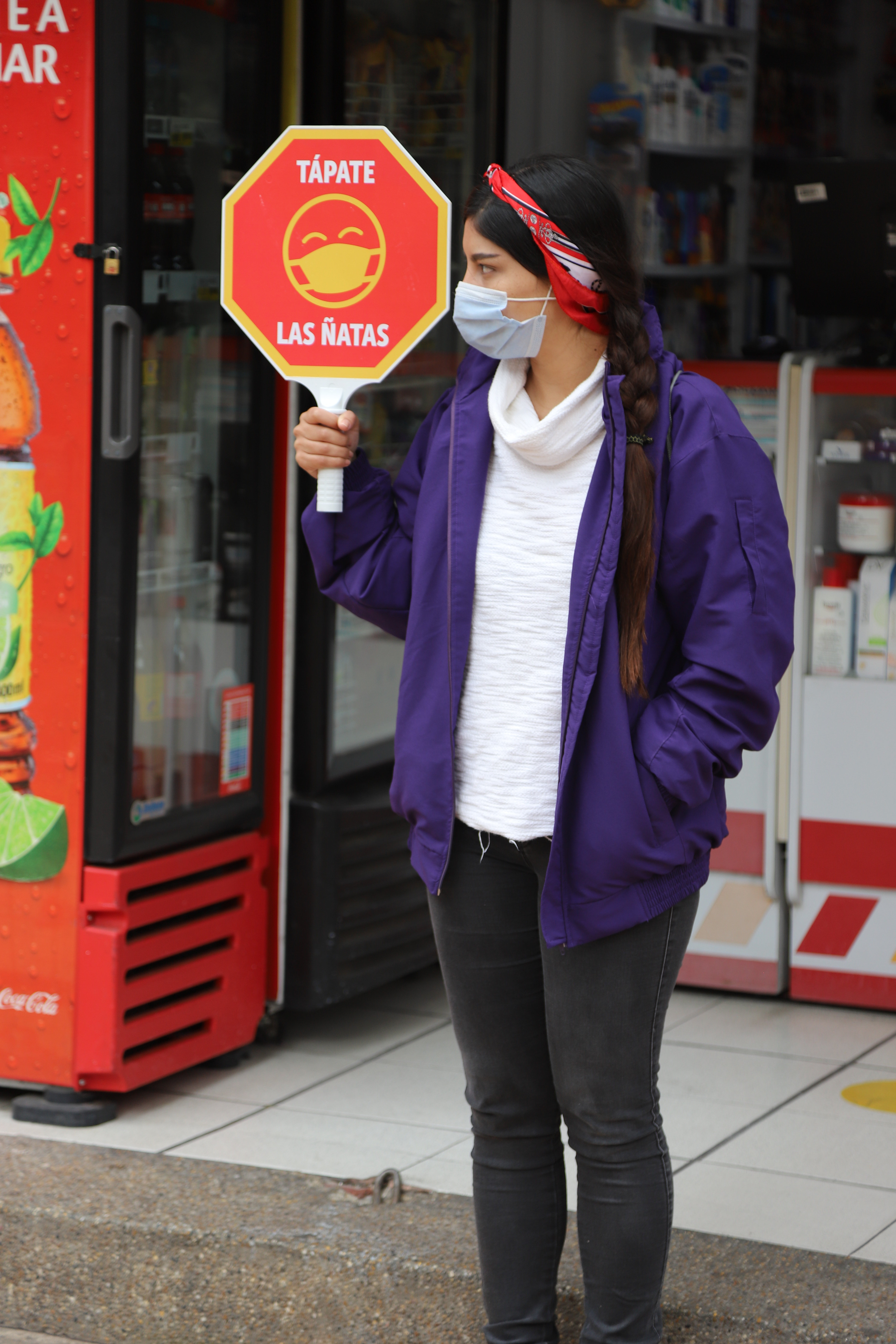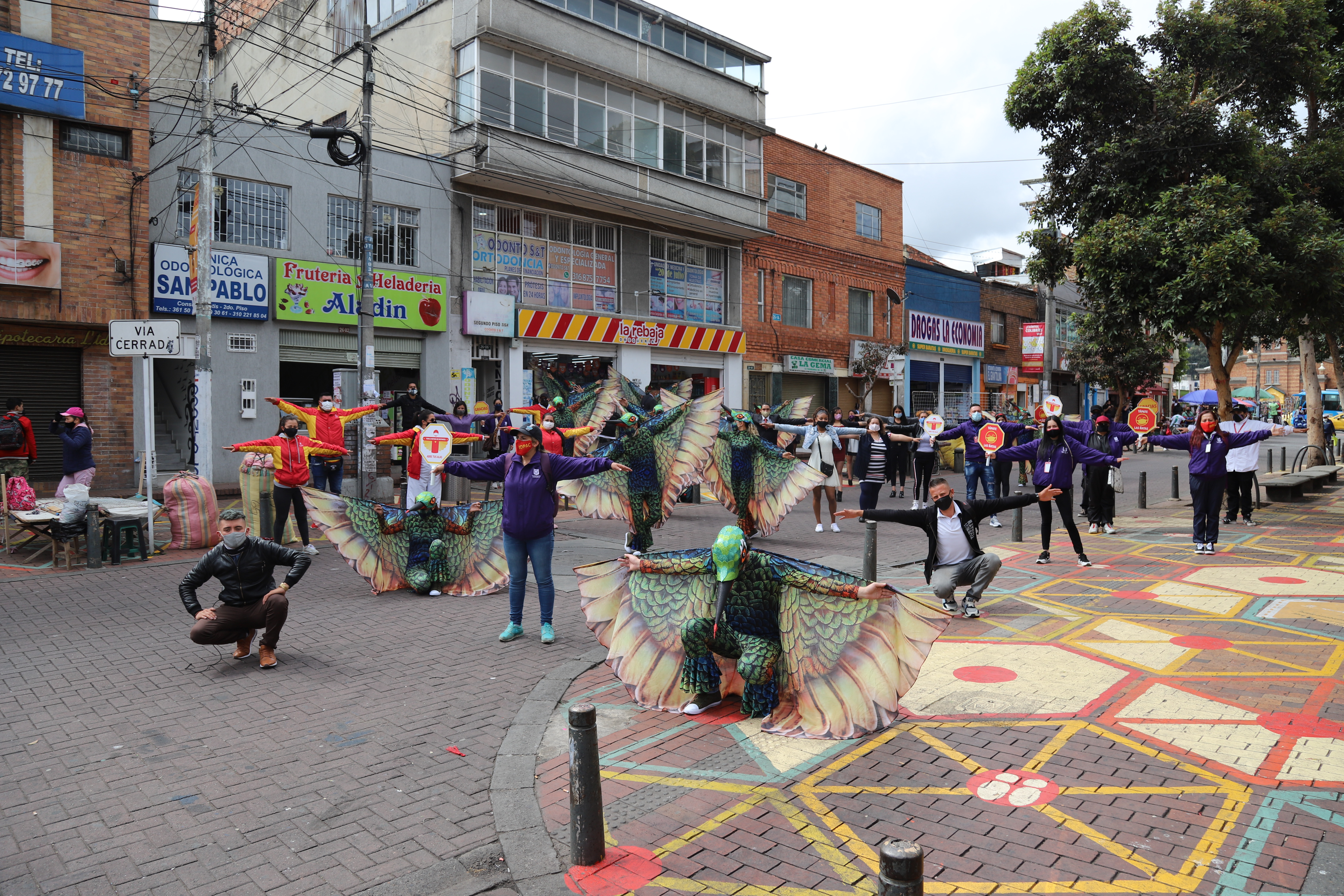 - © http://commons.wikimedia.org/wiki/User:Pedro_Felipe
- © http://commons.wikimedia.org/wiki/User:Pedro_Felipe- - © City of Bogotá
- - © City of Bogotá
City
Bogotá
Main actors
City Government, Community / Citizen Group, Public Utility, Private Sector
Project area
Whole City/Administrative Region
Duration
Ongoing since 2016
Improving engagement between public agencies, the private sector, community groups and citizens.
The Citizen and Democratic Culture District Network is a participatory initiative that fosters interaction between the public administration, the private sector, community organizations and citizens. It seeks to strengthen the civic and democratic culture related to the City’s priority themes of diversity and gender, trust, participation, cohabitation and safety, environmental culture and sustainable mobility
To achieve this objective, the City administration is implementing cultural change initiatives that improve coexistence, recognize and respect cultural diversity and care for collective and environmental assets. The Citizen and Democratic Culture District Network focuses on providing solutions through cultural transformations that simultaneously improve intersectoral management, citizen participation, efficient resource management and the dissemination of social knowledge.
The need for a network that promoted interaction between public, private and community parties was identified in 2013; year in which the School of Multipliers for Life came to life. This process led to the establishment of the Citizen and Democratic Culture District Network through several District Agreements that define the scope and operation of the Network.
- Implement strategies for strengthening the conceptual, methodological and technical capacities of citizen organizations linked to the Network and enhance capacities for these organizations to generate social capital in their communities.
- Coordinate and guide efforts from the district administration and the private sector that promote citizen initiatives in the field of cultural transformation. This should include an articulated offer of financial support, technical support, benefits for good practices and public-private partnerships.
- Promote the information about civic culture and cultural change, from the district administration and from the citizens.
- Create coordination and synergies between the State, the private sector and civic organizations to promote social dialogue and collective actions in civic culture.
- Encourage citizens to use the Internet and make visible the collective actions in civic culture undertaken.
The Network is part of the Public Policy for Civic Culture and works through four processes:
- Social organization: The Network implement strategies for strengthening the conceptual, methodological and technical capacities of citizen organizations linked to the Network and enhance capacities for these organizations to generate social capital in their communities.
- Social dialogue and collective action: The Network generates engagement and synergies between the State, the private sector and community organizations for social dialogue and collective action in matters of civic culture and cultural transformation. For this purpose, it creates participation formats to define the criteria necessary for the implementation of citizen culture projects in Bogotá.
- Information and knowledge management: The Network encourages stakeholders to produce information about civic culture and cultural transformation in Bogotá. The information should define priorities for the implementation of programs and projects that involve actions conducive to the promotion and strengthening of the civic and democratic culture in Bogotá. The Network stimulates the use and appropriation of the information generated. It makes visible the collective actions undertaken, in order to promote social memory, institutional learning and, in general, the installation of civic and democratic culture in the public agenda of the city.
- Promotion: the Network coordinates and guides the efforts from the district administration and the private sector that promote civic culture initiatives and cultural transformation. The objective is to generate an articulated offer.
The Network is managed through two groups:
- Inter-sectorial group of civic culture: aims to unite and articulate efforts within the district administration that foster cultural transformation and strengthen citizen culture in Bogotá.
- Thematic work groups: these groups call upon the diverse district administration entities, community organizations, academia and interested citizens, around specific challenges for the ideation and implementation of strategic projects of citizen culture and cultural transformation.
Public administration resources have been made available by inter-administrative agreements with:
1. Secretary of Security Coexistence and Justice
2. Secretary of Social Integration
3. Secretary of Women
4. Transmilenio - Idartes
5. Secretary of Habitat
6. Secretary of Mobility
7. EAAB, Canal Capital
The last 3 district administrations have executed the Network project.
- The Network is characterized by the following aspects: cross-sectoral nature (civil society and public administration), cross-sectional (merging of different disciplines, sectors and institutions), inter-institutional (coordination and complementarity between public institutions) and permanent (which transcends district administrations).
- Between 2016 and 2020, 422 community groups joined the Network and 20 central and decentralized entities have worked in a collaborative manner around issues such as Public Policy, Stimuli for Civic Culture District Network - PDECC, Civic Culture Week and the Biennial Survey of Cultures.
- The Network has accompanied knowledge management processes with the development of 334 social reports prepared by community groups.
- Citizen participation and interaction through web platforms: - Bogotá a Machismo Free Space, Inhabiting My Stories and Bogotá Live Natural, as well as in the creation of the civic culture platform by the Ministry of Culture, Recreation and Sports.
- Creation and implementation of strategies for civic culture and cultural transformation built through thematic groups such as: Parks for Everyone, Farra en la Buena, Inhabiting My Stories, Bogotá Free Space of Machismo, Bogotá Live Natural, Social appropriation of Transmilenio and Transmicable, Social appropriation of the Bike, Habitat: Community Environments.
Further results include:
- 2,700 initiatives submitted to the District Stimuli for Civic Culture Portfolio, 584 incentives submitted to social and community organizations and more than 3 million direct beneficiaries
- 20 citizen dialogues and 2 versions of the Civic Culture Week: 180 activities carried out by 24 organizations and 80 community organizations in each version and more than 400,000 participants each year
- 6 public-private and public-community partnerships promoted
- 15 civic cultural strategies implemented between 2017 and 2019
- 4 civic culture strategies for 2020:
- Gender violence
- Health and behavior in COVID
- Public servants as collaborators for civic culture
- Appropriation and usage of public restrooms
The public entities need to have greater human, technical, operational, and financial resources for implementation, dissemination, and monitoring of the Network.
For the Network, civic culture is an exercise of joint responsibility. There is an understanding that public, private and community spaces are places for experiences and knowledge exchange. Based on this, it is understood that citizens have an active and important role to play in civic change. The Network shows that these dynamic interactions allow the achievement of civic changes by acknowledging that civic culture and cultural transformation are exercises of citizenship and cultural rights.
Since its beginning, the Network has grown on a daily basis with more citizens, public administration employees and private companies joining. Thus, consolidating itself as an important platform in which all citizens can participate and contribute to the development of the city. The success of the networks demonstrates that culture is an important aspect of community life and is a fundamental axis for thinking, managing and securing sustainable development.
A Technical Group of Civic Culture has been created during the Covid-19 pandemic. The Directorate of Civic Culture organized the first panel on Civic Culture during the Covid-19 pandemic. The purpose was to share experience and learn from the Behavioral Insight Team and the Mayor's Offices of Bogotá, Medellín and Cali.
City of Bogotá’s best practice document
External links / documents
On Map
The Map will be displayed after accepting cookie policy

